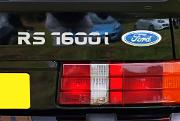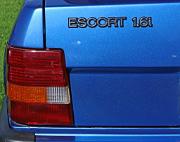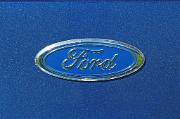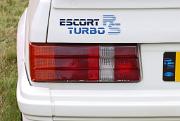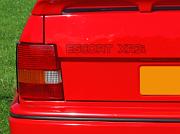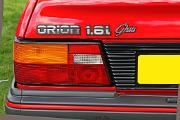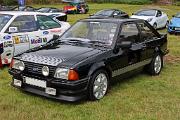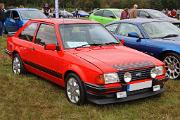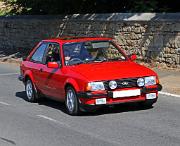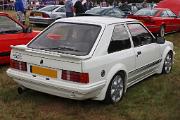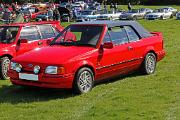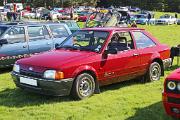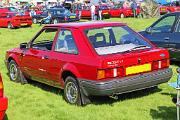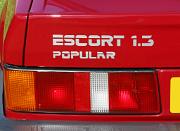
Ford Escort 1990 1.3 Popular. Ford first coined the 'Popular' tag on its 1933 Model Y, and brought it back in 1953 for a continuation of the old Ford Anglia when the 100E was launched, and later brought out a 100E Popular. But the Escort had to wait until 1974 with the Mk2 model for a 'Popular' and 'Popular Plus'. These continued onto the Mk3 and Mk4 as here.
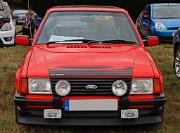
Ford Escort 1983 RS 1600i. The banding on the bonnet was unique to the RS1600i, but since many of the cars were used in competition, it quickly disappeared as the cars were prepared and were painted. The 1,597cc 4-cylinder CVH engine was fitted with solid tappets and a different cam to allow it to rev higher, and some versions were tuned to give 160 bhp from the standard 115 bhp.
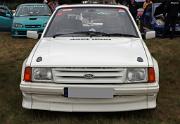
Ford Escort 1985 RS Turbo. Powered by a 1,597cc 4-cylinder CVH engine with KE Jetronic electronic ignition and a Garrett AiResearch T3 turbocharger to produce 132 bhp. The grille and front spoiler were unique to the RS Turbo.
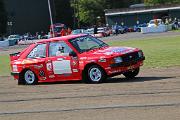
Ford Escort G3 1980. When Ford introduced the front wheel drive MkIII Escort they realised it could not be a suitable Rally car. So Ford set out to develop a rear wheel drive version of the MkIII Escort to be called the RS1700T. Separately Gartrac Motorsport also had the same idea and essentially took everything underneath a MkII Escort and fitted under an altered MkIII shell and stuck in a 2.2-litre Ford Pinto engine tuned by Cosworth. The G3 was found to be better than the RS1700T so Ford backed development
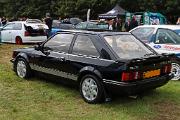
Ford Escort 1983 RS 1600i. Launched in 1981, the RS 1600i was specced up to be a Homologation special for use in competition and its comforts were pared back. 5,000 were ordered to comply with regulations, but the final build was 8,659. The engine was built to a different specification to allow tuning, and both the front suspension and the gearbox were different from other Escorts including the XR3i.
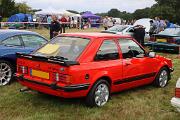
Ford Escort 1983 RS 1600i. Launched as a stripped out Homologation special for competition, the RS 1600i was available with added comforts, such as the opening rear windows and sun roof. The rear spoiler was unique to the RS 1600i
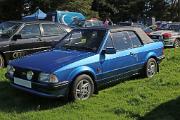
Ford Escort 1984 1.6i Cabriolet. The 1.6i engine was one of three different fuel injected 1,596cc CVH engines, the XR3i being the most powerful
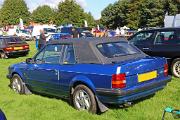
Ford Escort 1984 1.6i Cabriolet. The Cabriolet was launched in 1983 and was designed and built by Wilhelm Karmann GmbH .
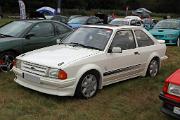
Ford Escort 1985 RS Turbo. Powered by a 1,597cc 4-cylinder CVH turbo engine giving 132 bhp. Cars were assembled at the Saarlouis plant in Germany and 8,604 were made in 1984 and 1985.
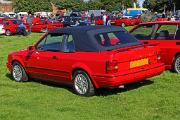
Ford Escort 1989 XR3i Cabriolet. The obvious base for the Escort Mk4 Cabriolet was the XR3i, but it was also offered with Ghia trim on the 1,392cc (72bhp) and the 1,597cc (89bhp) engines. The XR3i shared its engine with the Ghia 1.6i, but was given handling improvements and equipment.
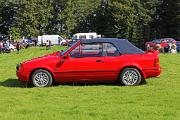
Ford Escort 1989 XR3i Cabriolet. Still built by Wilhelm Karmann GmbH , the Cabriolet was 30 kilos heavier because of a strengthening hoop and other structural enforcement
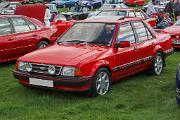
Ford Orion 1985 1.6i Ghia. Launched in 1983, the Orion was a 3-box saloon version of the Mk3 Escort. Engine options were the 1,296cc 4-cylinder or the 1,598cc CVH engine with carburettor or with fuel injection (as on this one). The front of the Orion differed from the Escort.
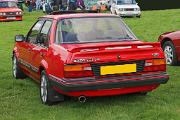
Ford Orion 1985 1.6i Ghia. The Orion was Ford's 3-box saloon version of the Ford Escort Mk3, transformed with a booted rear that was ten-inches longer than the hatchback and 6-inches longer than the estate. Offered in L, GL and Ghia trim, the Orion was intended to be upmarket, but when the Mk4 Escort was introduced in 1986 the next version of the Orion was simply an Escort with a boot.
All images and content of this site is the copyright of Simon GP Geoghegan
